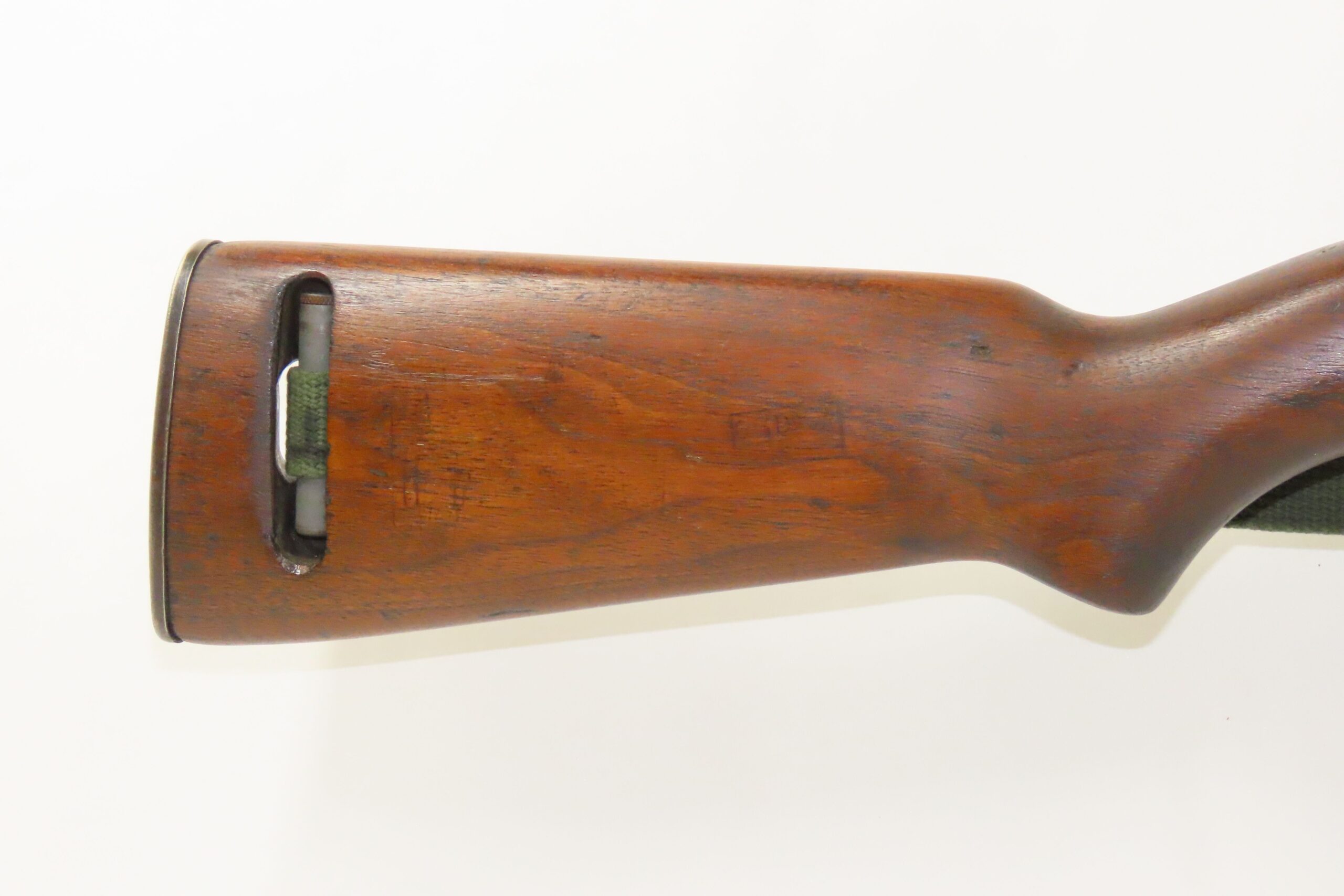- No products in the cart.
1943 WORLD WAR II U.S. UNDERWOOD TYPEWRITER M1 Carbine .30 Caliber with OLIVE CANVAS SLING & OILER
This gun is listed as a Curio & Relic and will need to be shipped to your local FFL dealer at our expense.
Product Description
1943 WORLD WAR II U.S. UNDERWOOD TYPEWRITER M1 Carbine .30 Caliber
with OLIVE CANVAS SLING & OILER
Here we present an Underwood U.S. M1 Carbine, manufactured in 1943 at the Underwood Typewriter Company of New York City. This .30 caliber semi-automatic rifle was first used by the United States Armed Forces on October 22, 1941. Of the 6,110,730 carbines made of all types built during the war, Underwood manufactured 545,616, or 9% of the total between 1942 and 1944. Despite having similar name and appearance, the M1 Carbine is not a carbine version of the M1 Garand rifle. They are different firearms and use different ammunition.
Prior to World War II, U.S. Army Ordnance received many reports that the full-size M1 Garand was too heavy and cumbersome for most support troops, such as mortarmen and radiomen to carry. During prewar and early war field exercises, it was found that the M1 Garand impeded these soldiers’ mobility, as a slung rifle would frequently catch on brush, bang the helmet and tilt it over the eyes. Many soldiers found the rifle slid off the shoulder unless slung diagonally across the back, where it prevented the wearing of standard field packs and haversacks. Additionally, Germany’s use of glider-borne and paratroop forces to launch surprise ‘blitzkrieg’ attacks behind the front lines generated a request for a new compact infantry weapon to equip support troops. This request called for a compact, lightweight defensive weapon with greater range, accuracy and firepower than handguns, while weighing half as much as the Thompson submachine gun or the M1 rifle. The U.S. Army decided that a carbine would adequately fulfill these requirements and specified that the new arm should weigh no more than five pounds and have an effective range of 300 yards. Paratroopers were also added to the list of intended users and a folding-stock version would also be developed.
The M1 carbine was also one of the most cost-effective weapons used by the United States military during World War II. At the beginning of World War II, the average production cost for an M1 carbine was approximately $45, about half the cost of an M1 rifle at approximately $85 and about a fifth of the cost of a Thompson submachine gun at approximately $225. The .30 Caliber carbine ammunition was also far cheaper to produce than the standard .30-06 ammunition; used fewer resources, was smaller, lighter, faster and easier to make. These were major factors in the United States military decision to adopt the M1 carbine, especially when considering the large numbers of weapons and ammunition manufactured and transported by the United States during World War II.
The overall condition is very good. Original finish. The action is excellent and the bore is in fine shape: shiny bright with sharp rifling. The walnut stock has a faint cartouche on the right side of the butt stock. The barrel is dated 7-43.
This firearm is classified as a Curio & Relic.
Barrel is 18 inches.
Caliber: .30 Carbine
Overall condition as seen in photos.
Very Fast. Very Safe. FREE SHIPPING. Will need to be sent to your local FFL or C&R licensee. This firearm is classified as a Curio & Relic.
Guaranteed AUTHENTIC & Includes CERTIFICATE OF AUTHENTICITY.
www.ancestryguns.com
$2400
#233424
Ancestry Guns considers all of our antique firearms as non-firing, inoperable and/or inert. Title 18, U.S. Code, Section 921(a)(16) defines antique firearms as all guns made prior to 1899. This law exempts antique firearms from any form of gun control or special engineering because they are not legally considered firearms. No FFL, C&R, or any license is required to possess, transport, sell or trade antique guns. All firearms sold by Ancestry Guns that were manufactured prior to 1899 are considered Antiques by the US BATF (United States Bureau of Alcohol, Tobacco & Firearms). Therefore, all of Ancestry Guns' antique guns may be shipped to all US States and most nations around the world.
This gun is listed as a Curio & Relic and will need to be shipped to your local FFL dealer at our expense.
























